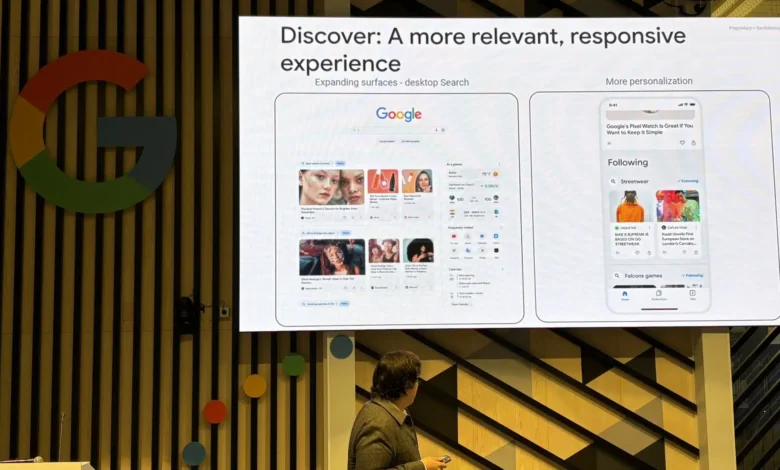Forget Just Searching: Google Wants Your Desktop Homepage to Be Your Newsfeed

▼ Summary
– Google is experimenting with adding its “Discover” feed to the desktop homepage, which traditionally has been minimalistic.
– Discover is a personalized content feed based on users’ past activities, previously available only on mobile devices.
– The experiment, currently in India, adds a content feed below the search bar on the desktop homepage, similar to mobile.
– This change could significantly impact user experience, making the homepage a destination for content consumption rather than just a search tool.
– The rollout of Discover on desktop depends on user engagement and feedback from the current test, with no confirmed global release yet.
For years, the Google.com desktop homepage has been the essence of digital minimalism: a logo, a search bar, and a couple of buttons. It’s a tool, a starting point. But imagine scrolling down and finding a stream of articles, videos, and updates tailored specifically to you. That potential reality just moved a step closer, as Google is experimenting with bringing its “Discover” feed to the desktop homepage.
What’s This “Discover” Thing Anyway?
If you primarily use Google on a computer, you might not be familiar with Discover. On mobile devices, it’s the personalized feed of content that appears in the Google app or when you open a new tab in Chrome. It’s not based on your active search query, but rather on your past activity – what you search for, the sites you visit, the videos you watch (if you have Web & App Activity enabled).
Think of it as Google’s attempt to show you interesting things before you even search for them. It learns your interests over time, surfacing news articles, evergreen blog posts, videos, and more, all algorithmically selected for you. You can help refine it by indicating topics you like or dislike, or by blocking specific publications.
Your Desktop Homepage Gets Busy
Until now, Discover has lived exclusively on mobile. The new experiment, currently spotted with users in India, changes that. Testers are seeing the familiar search bar at the top, but below it sits the Discover feed, presenting cards of content much like it appears on phones.
This fundamentally alters the purpose of the Google homepage. It shifts from being a pure utility – type query, get results – to a potential destination for content consumption and, well, discovery. It mirrors the feed-based interfaces we’re accustomed to on social media platforms, aiming to keep users engaged directly on Google’s property.

Why This Matters (Beyond Just Looks)
This isn’t just a cosmetic tweak; it has potentially significant implications:
- User Experience: Will users appreciate having content pushed to them on the traditionally clean desktop homepage, or will it feel cluttered and distracting? It could turn the simple act of starting a search into a session of scrolling through recommended content.
- Publishers & Creators: For website owners, marketers, and content creators, Discover on mobile is already a noticeable traffic source. Bringing it to the vast desktop audience could represent a massive new channel for visibility and clicks. Optimizing content for Discover might become even more crucial.
- Google’s Ecosystem: It’s another way for Google to keep users within its ecosystem, potentially increasing ad exposure and engagement time on its own domain rather than users immediately clicking off to other sites.
Is This Coming Soon To A Screen Near You?
It’s crucial to remember this is currently just a test. Google constantly experiments with new features, and many don’t make it to a global rollout. The expansion of Discover to the desktop homepage is likely contingent on user engagement metrics and feedback from the test group in India. There’s no official word on if, or when, this might become standard for everyone.
However, it clearly signals Google’s ongoing effort to evolve beyond a simple search box and become a more integrated platform for information and content consumption, no matter which device you’re using. Keep an eye on that clean white space below the search bar – it might not stay empty forever.
(Source: Source Engine Land)





